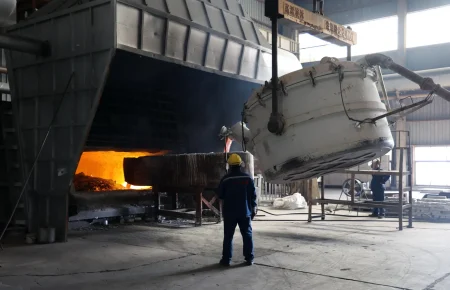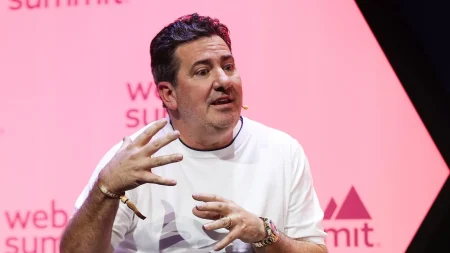AST SpaceMobile’s Rise to the Stars: How a Venezuelan Entrepreneur is Revolutionizing Space-Based Cellular Service
In a groundbreaking development that’s reshaping the telecommunications landscape, AST SpaceMobile announced an expanded partnership with Verizon on Wednesday to provide cellular service from space, filling critical coverage gaps for customers beginning in 2026. The announcement builds upon a $100 million deal from May 2024 and sent AST’s stock soaring 9% in a single day. This remarkable surge translated to an almost $500 million increase in wealth for the company’s founder and CEO Abel Avellan, a Venezuelan native whose entrepreneurial journey has been nothing short of extraordinary. The recent success caps off an exceptional 30-day period for Avellan, who founded AST in 2016 using proceeds from selling his first company, Emerging Markets Communications, for $550 million that same year. With approximately 24% ownership of AST (78 million shares), Avellan’s net worth has doubled from $2.9 billion to an estimated $6.2 billion since early September, riding on the back of a 101% stock increase. Even more impressively, his fortune has more than tripled over the past six months, from $1.6 billion, highlighting the market’s growing confidence in space-based cellular technology.
AST SpaceMobile has been methodically building its presence in the satellite connectivity market, securing more than 30 partnerships with major cellular providers worldwide, including Verizon, AT&T, and Vi (India’s leading telecom provider). The company has also strengthened its position by landing contracts with the U.S. Space Force, demonstrating the technology’s potential beyond commercial applications. Industry analysts, including Mike Crawford from B. Riley Securities, anticipate Rakuten becoming the next provider to sign a definitive committed revenue contract, especially after the Japanese mobile carrier included an “AST SpaceMobile Progress” slide in its 2024 investor presentation. Despite the capital-intensive nature of satellite infrastructure development, AST has shown remarkable financial resilience, raising $575 million through convertible senior notes in July 2024. This strategic financing boosted the company’s cash reserves above $1.5 billion, which Avellan described as positioning AST “to scale quickly with the deployment of the world’s first and only space-based cellular broadband network.” Investors have responded enthusiastically, driving shares up 53% since the financing round’s completion, seemingly viewing these substantial investments as necessary steps toward building a revolutionary communications infrastructure that works directly with everyday smartphones.
The remarkable growth in AST’s stock price reflects the increasing investor appetite for the expanding market of direct satellite-to-smartphone connectivity, a technology that enables service even in areas without traditional cell tower coverage. While Elon Musk’s SpaceX is currently the biggest player in this space, providing Starlink connectivity for a limited selection of apps to T-Mobile customers in the United States (recently enhanced by a $17 billion spectrum licensing deal with EchoStar), industry experts suggest AST has established a stronger foundation with mobile operators. According to Tim Hatt, head of research at GSMA Intelligence, “AST has a larger foothold within the mobile operators for the partnerships that have been signed,” though he notes that “Starlink is ahead of AST in terms of the number of services that have actually launched.” This assessment highlights the competitive nature of this emerging market, where different approaches to satellite technology and business partnerships will likely determine which companies ultimately dominate.
AST’s technological approach represents a significant differentiator in the satellite connectivity market. The company’s satellites are built with large antennas that unfold in space to approximately 50 times the size of Starlink’s, enabling a more cost-effective network buildout while providing full broadband connectivity rather than just texting capabilities. This technical advantage allows AST to deliver more comprehensive services directly to standard smartphones without modification. While SpaceX is developing next-generation Starlink satellites with improved capabilities, their deployment depends on the successful operation of the company’s new Starship rocket, which has faced significant delays due to test flights earlier this year that ended in explosions. Currently, AST has five satellites providing service to its customers, with plans to launch two more over the next two months. The company’s ambitious roadmap includes at least five launches in the first quarter of next year, enabling service expansion to Canada, the UK, and Japan. In its second quarter earnings announcement, AST projected revenue of $50-75 million in the latter half of 2025, with Avellan outlining plans to have 45-60 satellites in orbit by the end of 2026, enabling truly global connectivity.
The story of AST SpaceMobile is inseparable from the journey of its visionary founder. Abel Avellan studied engineering at Simón Bolívar University before gaining industry experience at Swedish telecom giant Ericsson. In 2000, he founded Emerging Markets Communications “with $50,000 and a pregnant wife,” building a company that provided satellite communication services to Africa and the Middle East, as well as to cruise and cargo ships. This venture proved successful enough that when he sold it to satellite company Global Eagle in 2016, it commanded a $550 million price tag, providing him with the capital and experience to launch AST SpaceMobile that same year. After deploying its first demonstration satellite in 2019, AST attracted $110 million in investments from telecommunications leaders like Vodafone, Rakuten, AT&T, and venture capital firms including London-based Shift Ventures. Avellan took the company public through a SPAC merger in 2020, achieving an initial valuation of $1.8 billion. The company’s remarkable trajectory continued through Wednesday’s announcement, when shares closed at $81.20, giving AST SpaceMobile a market capitalization of $29 billion—a sixteen-fold increase from its public debut valuation.
AST SpaceMobile’s meteoric rise represents more than just a business success story; it signals a fundamental shift in how we conceptualize global connectivity. By building a space-based cellular broadband network accessible directly by everyday smartphones, the company is working to eliminate dead zones and extend reliable communication to previously unreachable areas. This innovation promises to transform emergency services, rural connectivity, transportation communications, and countless other applications where traditional cellular infrastructure is impractical or impossible. The remarkable financial growth—both for the company and for Avellan personally—reflects the market’s recognition of this technology’s transformative potential. As AST continues expanding its satellite constellation and activating service across more regions, the coming years will determine whether this Texas-based company, led by a Venezuelan entrepreneur who started with modest means, will indeed revolutionize global telecommunications by connecting the unconnected parts of our planet directly through space. What began as an ambitious vision is rapidly materializing into infrastructure that could reshape how humanity communicates, demonstrating once again how entrepreneurial determination can translate cutting-edge technology into solutions for everyday challenges.














